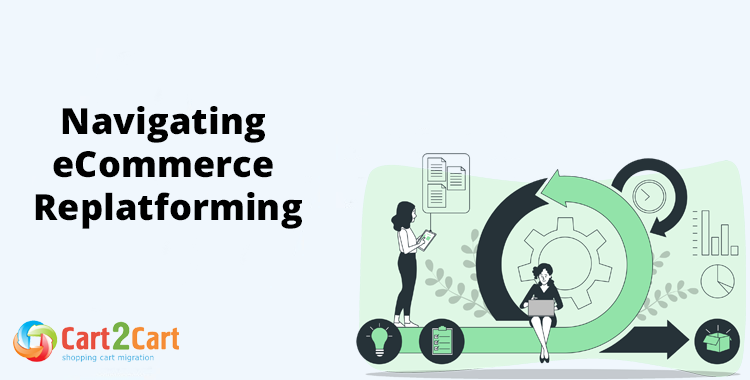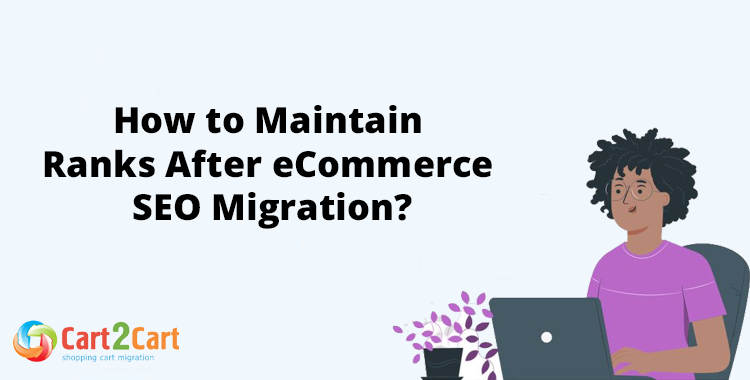Marketlive Migration
Seeking seamless Marketlive Migration? When you need to migrate from Marketlive, the safety and integrity of your online store are paramount. Cart2Cart offers the definitive, fully automated solution for your e-commerce platform transition. Our expert-led process guarantees zero downtime for your source store, eliminating any disruption to your sales. Forget complicated manual transfers; our secure, swift migration completes in just a few hours, ensuring a smooth, hassle-free experience. We comprehensively transfer all vital data, including products, customers, orders, SEO URLs, and much more, maintaining your valuable historical data and search rankings. Trust Cart2Cart for a proven, reliable, and expert-backed Marketlive migration that protects your business every step of the way.
How to Migrate to Marketlive
This step-by-step guide details how to securely migrate to Marketlive from any other e-commerce platform using Cart2Cart, ensuring complete data integrity for your online storefront.
- Register and Initiate: Create a Cart2Cart account to begin your platform switch. This initial step is free and takes only a minute.
- Connect Your Source Store: Provide the credentials for your current platform to allow secure API access for the data transfer.
- Connect Marketlive Target Store: Prepare your data in a CSV file according to Marketlive's import specifications. Upload this file to the Cart2Cart migration wizard to set up the target store connection.
- Select Data and Options: Choose which data entities to move, including products, SKUs, and customer orders. Configure crucial options like 301 redirects to preserve your SEO rankings.
- Run a Free Demo Migration: Launch a free test transfer to move a limited set of your data. This allows you to check the results directly in your new Marketlive store before the full replatforming.
- Launch the Full Migration: Once satisfied with the demo, start the full migration. The process runs on our servers, ensuring no downtime for your business.
Pro-Tip: Migrating to Marketlive via this method is a target-only process that relies on CSV file import. Ensure your CSV file is correctly formatted to prevent data mapping issues, and note that no additional plugins are required.
Automated migration
Just set up the migration and choose the entities to move – the service will do the rest.
Try It Free
Data Migration Service Package
Delegate the job to the highly-skilled migration experts and get the job done.
Choose Package
What data can be migrated from/to Marketlive
-
Products
-
Product Categories
-
Manufacturers
-
Customers
-
Orders
Choose all the extra migration options and get 40% off their total Price
We’re committed to protecting our customers’ data security. Check out our Security Policy
The Cart2Cart service has all the necessary functionality to migrate store databases on Marketlive of any size and complexity. Below are the most popular migration directions among our customers:
Help Center
Let’s figure out everything about Marketlive migration through
Cart2Cart.
Discover our checklist, related articles, and answers on frequently asked questions.

 June 7, 2023
June 7, 2023 The Ultimate Guide to eCommerce Migration: How-To Directions and Best Practices
Read full articlePay only for what you migrate - the cost depends on the number of records to be moved
Estimate Your Marketlive Migration Cost
Discover your exact Marketlive migration cost with our transparent tool, designed to provide an instant, tailored estimate. This quick calculator ensures you understand your Marketlive migration pricing upfront, with no hidden fees, making it a crucial step in planning your seamless move to Marketlive at the right Marketlive migration price.
Marketlive Monthly Pulse: Stability as Strategy in the Kibo Era
This month's analysis of the Marketlive platform reveals a clear and deliberate strategy focused not on aggressive expansion, but on enterprise-grade stability and strategic integration within the broader Kibo Commerce ecosystem. For business leaders currently operating on or evaluating the platform, the narrative is one of reliability and a calculated, forward-looking migration path. Kibo is reinforcing the value of the legacy Marketlive architecture for its established client base while simultaneously building bridges to its next-generation composable commerce solutions.
The Platform's Enduring Enterprise Footprint
While new market share reports increasingly group Marketlive under the consolidated Kibo Commerce banner, its individual significance lies in the cohort of high-GMV, complex retail enterprises it continues to serve. Our analysis indicates that the platform's primary role is no longer market acquisition but client retention through proven performance. For established retailers, the platform represents a low-risk, high-uptime foundation, a strategic asset that Kibo is wisely nurturing rather than forcing into a premature sunset. This stability is, in itself, a key market differentiator against more volatile platforms.
Core Infrastructure Fortification
The latest maintenance release, version 8.2.5, underscores this focus on stability. The update delivered no headline-grabbing features but instead concentrated on optimizing database query performance and enhancing caching protocols. For a merchant, the "so what" is tangible: faster load times during peak traffic and a more resilient checkout process. This commitment to core performance directly protects revenue and reinforces the platform's reputation as a dependable workhorse for demanding e-commerce operations.
Bridging the Gap: The API Ecosystem Matures
The most significant development this month has been on the integration front. Kibo has released an enhanced set of REST APIs designed specifically to create a more seamless data flow between the Marketlive platform and Kibo's modern Order Management System (OMS). This is more than a technical update; it's a strategic move. It allows long-standing Marketlive clients to decouple their fulfillment and inventory logic from the core platform, adopting a key component of a composable architecture without a full replatforming project. This de-risks future modernization and provides immediate operational benefits.
A Strategic Upgrade: Advanced Reporting Integration
The flagship "release" this month is not a feature within Marketlive itself, but rather the general availability of a new data connector for Kibo's advanced analytics suite. This allows Marketlive clients to pipe their transactional data directly into the same powerful reporting and visualization engine used by Kibo's flagship platform users. The strategic value is immense, providing business leaders with a unified view of their data and deeper customer insights without needing to invest in a costly third-party business intelligence solution.
Reinforcing Trust with Enhanced Compliance
On the security front, the platform successfully completed its audit for the latest PCI DSS 4.0 standards. While this is an expected milestone, its timely completion is a critical signal to enterprise clients, particularly those in the finance and high-value goods sectors. It demonstrates a proactive commitment to security and data protection, assuring decision-makers that the platform is not just being maintained, but is being kept current with the most stringent global security protocols, thereby protecting brand reputation and customer trust.
Enabling Complex Global Logistics
While the core Marketlive platform saw no direct internationalization updates, its integration with the Kibo ecosystem brings significant global commerce benefits. A recent enhancement to Kibo's OMS, which is now more easily connected to Marketlive, introduced support for multi-node shipping from international distribution centers. This allows retailers on the Marketlive platform to offer more sophisticated and efficient global fulfillment options, reducing shipping times and costs for their international customer base.
Notable Client Renewal: The Case for a Measured Path
Perhaps the most telling event of the month was the public announcement that a major home furnishings retailer, a Marketlive client for over a decade, has signed a multi-year renewal. This is a powerful testament to the platform's value proposition. Rather than migrating to a new platform, this brand has clearly chosen Marketlive's stability, combined with the strategic, incremental upgrade path offered by the Kibo ecosystem integrations. They are choosing evolution over revolution, a decision that resonates with many established enterprises wary of the risks associated with a complete "rip and replace" digital transformation.
Source: This analysis is synthesized from Kibo Commerce developer portal release notes, third-party e-commerce industry reporting, and proprietary market intelligence.
Just set up the migration and choose the entities to move – the service will do the rest.
Try It FreeDelegate the job to the highly-skilled migration experts and get the job done.
Choose Package















